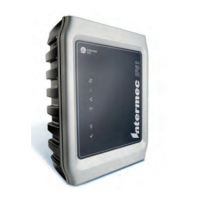Chapter 3 — Developing and Using RFID Applications
IF61 Fixed Reader User’s Manual 73
About the Developer Tools
Use the Developer Tools for basic testing of your RFID system.
The Developer Tools support these features:
• General purpose input/output (GPIO) testing. For help, see
the next section.
• Sending BRI commands or BRI script files to the IF61 from
an interactive browser interface. For help, see “Sending BRI
Commands and Running Scripts” on page 74.
• Editing and testing JavaScript files. For help, see “Using the
Workbench” on page 76.
Testing the GPIO Interfaces
If you have external GPIO controls such as motion sensors or
indicator lamps connected to the IF61, you can use the
Diagnostics tool to test the interfaces and verify that the controls
behave as expected. Leave the controls connected to the IF61
GPIO port when using the Diagnostics tool.
To test the GPIO interfaces
1 From the menu, click Edgeware Applications > Developer
To o l s > GPIO. The GPIO screen appears.
Reader-Initiated
Connections
For reader-initiated TCP/IP connections to a
remote LLRP client, enter this information:
• Client Address - IP address of the remote LLRP
client.
• TCP Port - Port number for the TCP/IP socket
connection.
• Enable Security (TLS) - Check this check box
to enable Transport Layer Security for this TCP/
IP connection.
LLRP Settings Descriptions (continued)
Setting Description
Note: To use the Developer Tools, you need to enable them. For
help, see “About the IF61 Edgeware Applications” on page 61.

